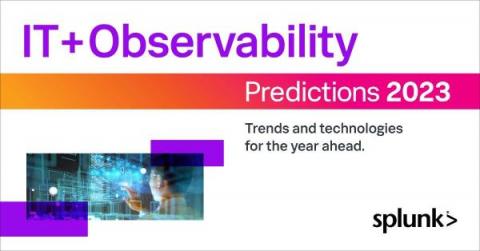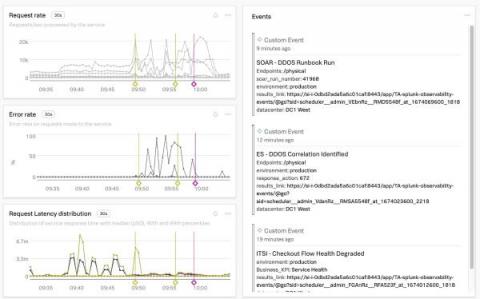Operations | Monitoring | ITSM | DevOps | Cloud
Splunk
Predictions: AI and Automation
Artificial Intelligence (AI) - or more specifically Machine Learning (ML) - and automation were big topics for many of our customers in 2022. Common reasons for the interest in AI and automation were to: increase efficiency, reduce manual processing, minimise human error and - especially for the use of ML - identify ‘unknown unknowns’.
Get More Out of Your Workload Pricing Investment with the Cloud Monitoring Console
Structured, Unstructured & Semi-Structured Data
EMEA Predictions for 2023
Yes, it’s that time of year again. As the New Year’s resolutions fade and the planning cycles kick-in, technical leaders in various organisations are often asked to get out the crystal ball to inspire our teams or steer an excited Board.
A Snapshot of our IT Ops Predictions for 2023
Today executives and customers expect IT and digital services to be available and performant at all times; compromised availability or performance is no longer tolerable. Think about it; when was the last time a digital service was unavailable and it didn’t make the news or social media? When was the last time you visited a website that was unavailable and you waited for the outage to be over, rather than finding an alternative in the moment?
Communicating Context Across Splunk Products With Splunk Observability Events
When an IT or Security issue impacts a development team’s software how are they notified? Is your organization still relying on mass emails that lack context and most engineers have probably already filtered out of their inbox? Communicating between siloed tools and teams can be difficult. How would you like to put IT, Security, legacy processes, and business notifications specific to development teams right into one of their most important tools? Now you can!
Observability to Modernize Apps and Increase Business Resilience
Increasingly, the speed and scale of a business can be measured by the resilience and performance of its applications. That’s why organizations are opting to modernize legacy applications by rewriting them using cloud-native tools and platforms. A Gartner study found that by 2025, cloud-native platforms will be the foundation for more than 95% of new digital initiatives, compared to less than 40% in 2021.
Introduction to Splunk Log Observer
CMDBs Explained: How To Maximize Value from Configuration Management Databases
For many IT organizations, having complete end-to-end visibility of their IT assets as well as a comprehensive understanding of integrations, dependencies and changing statuses is an ideal position rather than a reality. This is especially true for organizations with legacy on-premises systems spread across many environments. Those that were cloud native or successfully migrated to the cloud had the privilege of cloud tools to visualize individual environments.











